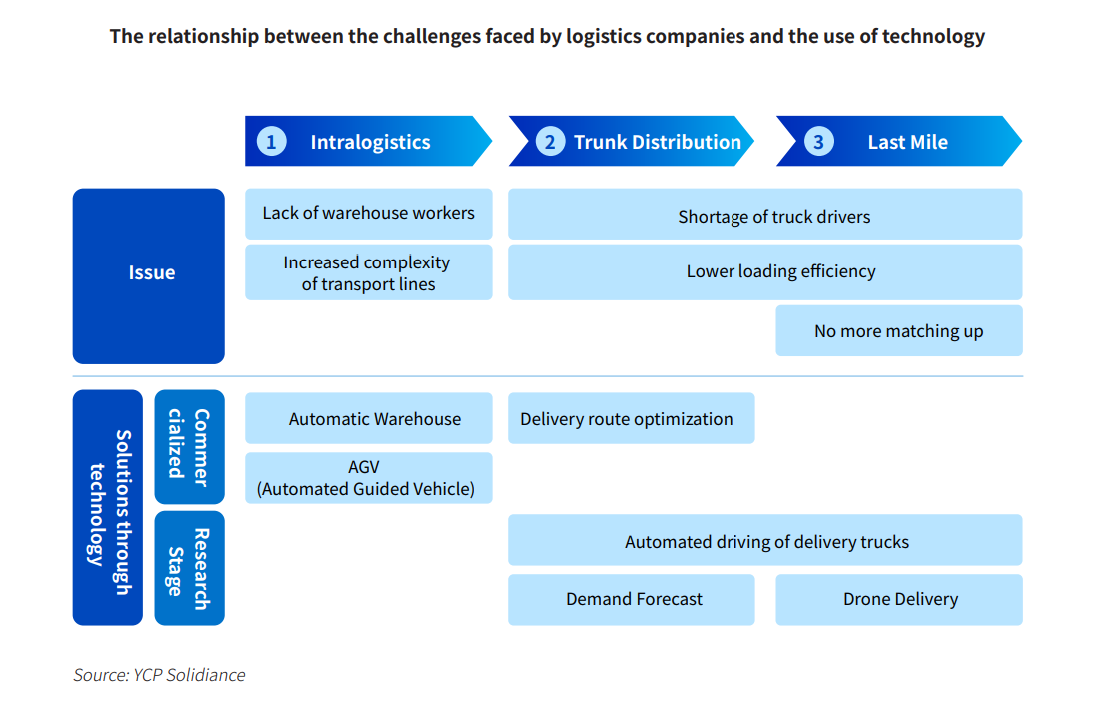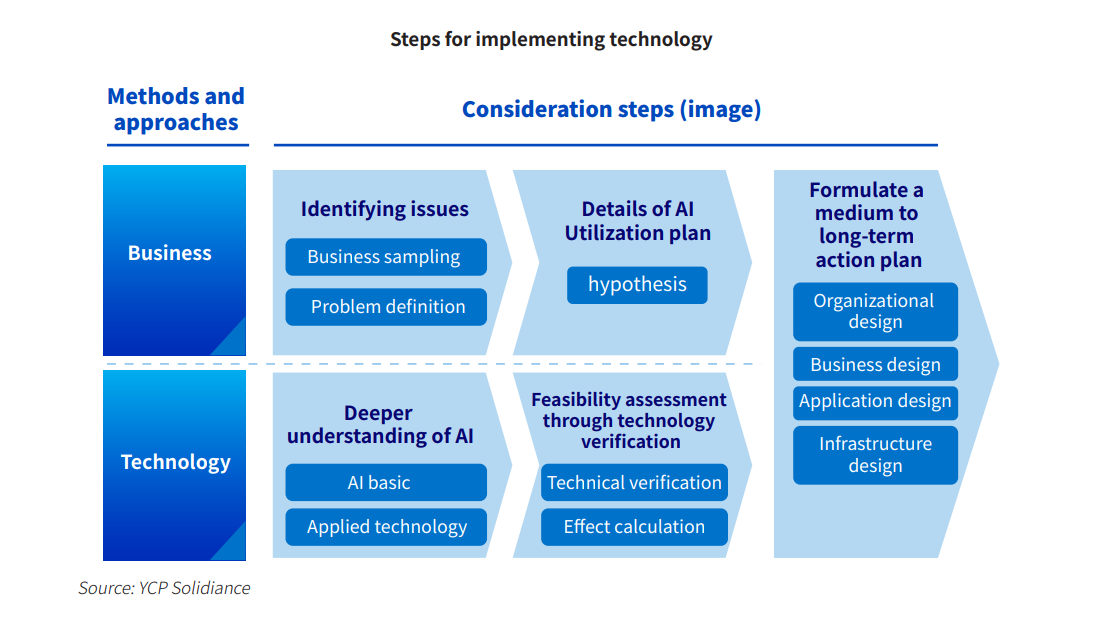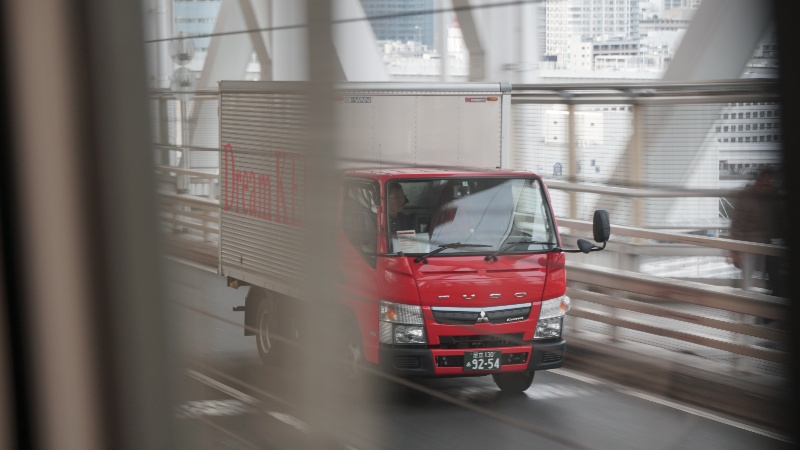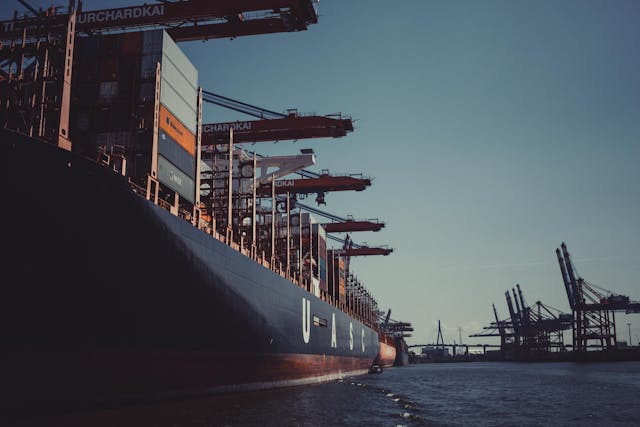Initially motivated by the pandemic and its adverse effects, the logistics industry in Japan has accelerated digitalization efforts. By doing so, the players involved have been able to leverage technology to address several concerning challenges, most specifically concerning areas like intralogistics, B2B logistics, and the last mile (corporate to individual).
To further understand Japan’s logistics industry and the technological solutions being used to overcome current obstacles, read this excerpt from our latest white paper, The Future of Technology in Social Infrastructure, which you can read in full here.
Logistical Challenges and Solutions via Digitalization
In what has been called the “logistics crisis,” companies that make their living in logistics are facing a variety of challenges in warehouse logistics, trunk line logistics, and the last mile. As labor shortages worsen, labor-intensive solutions to these challenges are reaching their limits, and efforts to utilize technologies such as AI and IoT have begun. The relationship between the overall issues and the use of technology, including those still in the research stage, can be summarized as follows:

Issue
Lack of Warehouse Workers: Although the labor shortage for warehouse workers has been as drastic as that of truck drivers, labor costs for warehouse workers are also on the rise (the nationally weighted average of the revised minimum wage by region in FY2017 was 848 yen, an increase of 25 yen). While truck freight rates are on an upward trend due to the shortage of drivers, warehouses have not made much progress in passing on the higher labor costs to prices, which is a factor pushing down the profit margin for warehouse operators.
Solutions via Technology
Automated Warehouses: Automated warehouses are warehouses that have a system that centrally manages the entire process of warehousing products, from receiving and storing, to shipping, which makes it possible to reduce the number of manhours required for warehouse operations.
AGV (Automated Guided Vehicle): AGV is an acronym for Automatic Guided Vehicle, which refers to a vehicle that transports products and parts unmanned within a factory or warehouse. In recent years, the use of AI and IoT within this area has increased, leading to the remarkable growth and evolution of AGV development. Through image recognition and machine learning, AGVs can run autonomously on irregular routes and analyze and optimize travel routes, and are becoming an effective solution to increasingly complex transportation lines.
Area #2: Trunk Line Logistics (B2B)
Issue
Shortage of Truck Drivers: While the volume of cargo is increasing, the unpopularity of the industry continues due aformentioned factors (declining birth rate, aging population, and the image of a harsh working environment), making the driver shortage even more serious. The Ministry of Health, Labor and Welfare (MHLW) has set the working hours for truck drivers at up to 13 hours per day on principle, with the possibility of extending this to 16 hours depending on the situation. They are also allowed to work no more than two 15-hour days per week, which is overwhelmingly longer than the eight-hour working hours set by most companies. In addition to this, in recent years, there has been an increase in the number of cases where sellers claim to offer “free shipping,” and it is thought that this wrinkle in improving services for consumers has also had an impact on the decline in wages for drivers.
Lower Loading Efficiency: Loading efficiency refers to the ratio of the weight of cargo actually loaded to the maximum loading weight of a truck. As transportation becomes more frequent among a smaller pool of workers, the loading efficiency of commercial trucks continues to decline year by year, and as of 2018, it has dropped from 55% in the 1990s to about 40%. With the increasing shortage of truck drivers, improving the efficiency of delivery, including loading efficiency, is an urgent task.
Solutions via Technology
Optimization of Delivery Routes: A system that supports the creation of delivery plans to optimize the loading of trucks and driving routes when transporting goods can reduce the delivery time of drivers and the work of creating new routes.
Automated Driving of Delivery Trucks: As a solution to the shortage of truck drivers, research and demonstration tests for the practical use of automated vehicles are underway. In particular, attention is being focused on a technology called “convoy driving,” in which multiple trucks communicate in real time about their driving conditions and automatically maintain a safe distance between them. A number of companies in Japan have already succeeded in demonstrating this technology on public roads, and it seems that it will soon be put to practical use.
Demand Forecast: In order to improve the efficiency of deliveries, systems that predict future demand and sales volume based on past sales results and market trends are being used. By forecasting demand and sales, it is possible to determine the minimum amount of inventory needed at each location, which is effective in minimizing delivery losses and shortages. In recent years, services have also begun to emerge that use satellite imagery data to analyze the number of customers visiting a store in a given trade area, as well as customer demographics and other factors to predict sales demand in retail stores.
Area #3: The Last Mile (Corporate – Individual)
Issue
Absentee Redelivery of Parcels and Cargo: According to a survey by the Ministry of Land, Infrastructure, Transport and Tourism, about 15% of all parcel deliveries are redeliveries. It is also estimated that 25% of driving distance is spent for redelivery, which is equivalent to 90,000 manhours of labor per year, which means about 180 million hours are spent on missed deliveries in a year. Although improvements have been made through the use of delivery boxes and the encouragement of time-of-day delivery, there is an urgent need to reduce the number of redeliveries and improve efficiency, as the EC market is expected to continue to expand amid a shortage of human resources.
Solutions via Technology
Drone Delivery: One of the solutions to the shortage of truck drivers and traffic congestion is the use of drones to conduct home deliveries. Although it has not yet been put to practical use, companies like Amazon and Rakuten are conducting demonstration experiments. There are still hurdles to overcome in terms of safety, technology, and legal regulations, but the results of these experiments are promising, such as Rakuten’s 2019 verification experiment in Chichibu City, Saitama Prefecture, wherein drones for deliveries were flown beyond visual range, with the cooperation of Tokyo Electric Power Holdings, Inc. and Zenrin.

To get further insight into other digitalization trends happening in other industries across Asia, subscribe to our newsletter here and check out these reports:






